Welcome to our comprehensive guide on optimizing cocoa orchard maintenance! Whether you’re a seasoned cocoa farmer or just starting, this guide will provide valuable insights and month-by-month planning tips to maximize your harvest. Maintaining a cocoa orchard requires careful attention throughout the year, and our goal is to make the process easier for you. We’ve covered you, from pruning and fertilization to pest control and disease management. We’ll delve into each month’s specific tasks and best practices, backed by accurate data and expert advice.

Cocoa Orchard Management
What is Cocoa Farming and its Overview?
Cocoa farming involves cultivating the cocoa bean, the dried and fermented seed of the Theobroma cacao tree. These beans are used to extract cocoa solids and cocoa butter, which are essential components of chocolate. The cacao tree originated in the Amazon rainforest and was domesticated over 5,300 years ago. West Africa is the largest cocoa producer, accounting for around 70% of the world’s crop.
The main cocoa plant varieties are Forastero, Criollo, and Trinitario, with Forastero being the most commonly used. Ivory Coast is the top producer of cocoa beans, followed by Ghana and Indonesia. Initiatives like SWISSCO, GISCO, and Beyond Chocolate support sustainable cocoa production. Deforestation due to cocoa production is a concern, but sustainable agricultural practices like agroforestry can help conserve biodiversity.
Cocoa farming is economically significant for countries like Nigeria, and the demand for cocoa products grows steadily. Around 300 to 600 cocoa beans are processed to produce 1 kg of chocolate. The beans undergo roasting, cracking, and deshelling to obtain nibs, which are then ground into a thick chocolate liquor or cocoa paste. Cocoa liquor is further processed by adding cocoa butter, sugar, and sometimes vanilla and lecithin to create chocolate.
Alternatively, a hydraulic press or the Broma process can separate cocoa powder and cocoa butter. Dutch process cocoa, with a distinct flavor profile, is produced by treating cocoa with an alkali. Roasting affects the final flavor and can be done on the whole bean or nib. Cocoa contains phytochemicals like flavanols, procyanidins, and other flavonoids, which may have a slight blood pressure-lowering effect. Additionally, cocoa beans contain theobromine and a small amount of caffeine.
Importance of Month-Wise Planning for Cocoa Orchard Maintenance
Cocoa orchard maintenance requires month-by-month planning. By adhering to a well-structured schedule, producers can maximize their harvest and promote the growth of healthy trees. Various duties, such as pruning, fertilization, pest control, and irrigation, require attention during various months. To encourage new growth, pruning is typically performed during the arid season. Effective planning enables cocoa farmers to remain organized, maximize productivity, and effectively address orchard requirements, resulting in a prosperous cocoa farming operation.
In case you missed it: How to Start Cocoa Farming from Scratch: Cultivation Practices and Production Management
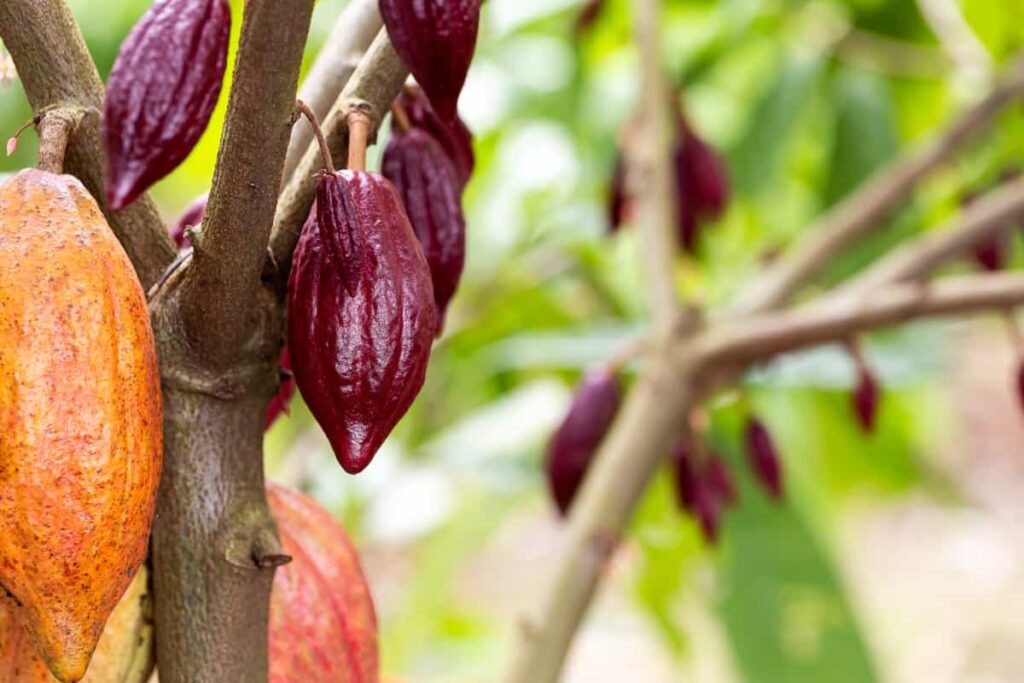
Understanding of Cocoa Tree
The cocoa plant, a small evergreen tree, typically reaches a height of 4 to 8 meters. In India, cocoa is primarily cultivated in Karnataka, Kerala, and Tamil Nadu as an intercrop with Arecanut and Coconut. The cultivation of cocoa is being promoted by chocolate companies through contract farming, leading to an increase in the cultivated area.
In 2008, India produced around 8500 metric tonnes of cocoa. Cocoa is the cacao tree’s dried and fermented fatty seed used to make chocolate. The term “cocoa” can also refer to the drink known as hot chocolate, the powder made by crushing cocoa seeds and removing the cocoa butter, or the combination of cocoa powder and cocoa butter.
Best Tips for Growing Cocoa Orchard Maintenance Practices
Climate: Cocoa can be grown at altitudes up to 300 meters above sea level. It requires a minimum monthly rainfall of 90-100 mm and an annual rainfall of 1500-2000 mm. The plants thrive in a climate with well-distributed rainfall, and irrigation may be necessary during prolonged dry periods. The ideal temperature range for cocoa is 15°C to 39°C, with an optimum temperature of 25°C.
Soil: Cocoa requires deep and well-drained soils. Poorly drained soil can negatively affect plant growth. The majority of cocoa cultivation in India is done on clay loam and sandy loam soils. The pH range of 6.5 to 7.0 is considered ideal for cocoa growth.
Shade requirement: Cocoa originated as an under-story crop in the Amazonian forests. Therefore, commercial cocoa cultivation is best suited in plantations where 50% of the light is available. In India, cocoa is well-suited for cultivation in coconut and arecanut gardens. Arecanut trees allow 30-50% of sunlight to penetrate through their canopy, which cocoa plants can intercept.
Propagation: Cocoa trees are propagated through vegetative methods, mainly softwood grafting. Scion sticks are grafted onto 2-3-month-old seedlings. Graft union occurs within a month, and the grafts are ready to plant after three months.
Spacing and Planting: Cocoa can be planted under forest trees or other crops. Spacing 2.5 x 2.5 m to 3.0 x 3.0 m is suitable in forests. In areca gardens, cocoa is planted in 2.7 x 5.4 m spacing. A single or double hedge system with appropriate spacing is followed when grown as an intercrop with coconut.
Management: The potting mixture for cocoa seedlings or grafts should consist of topsoil, sand, and FYM in a ratio of 2:1:1. Fertilizers can be applied if required, with urea being commonly used. Insecticides and fungicides should be sprayed as needed to control pests and diseases. Adequate shade, irrigation, and wind protection are required in cocoa nurseries.
Pruning: Regular pruning is necessary to maintain a good canopy. Formation pruning is done in young cocoa trees to adjust the height of the first branch. Sanitary pruning removes diseased or unnecessary branches, while structural pruning shapes the canopy. Pruning practices should maintain maximum leaf area to avoid self-shading of leaves.
In case you missed it: Optimizing Coffee Orchard Management: A Month-by-Month Garden Maintenance Guide for High Yields and Profit
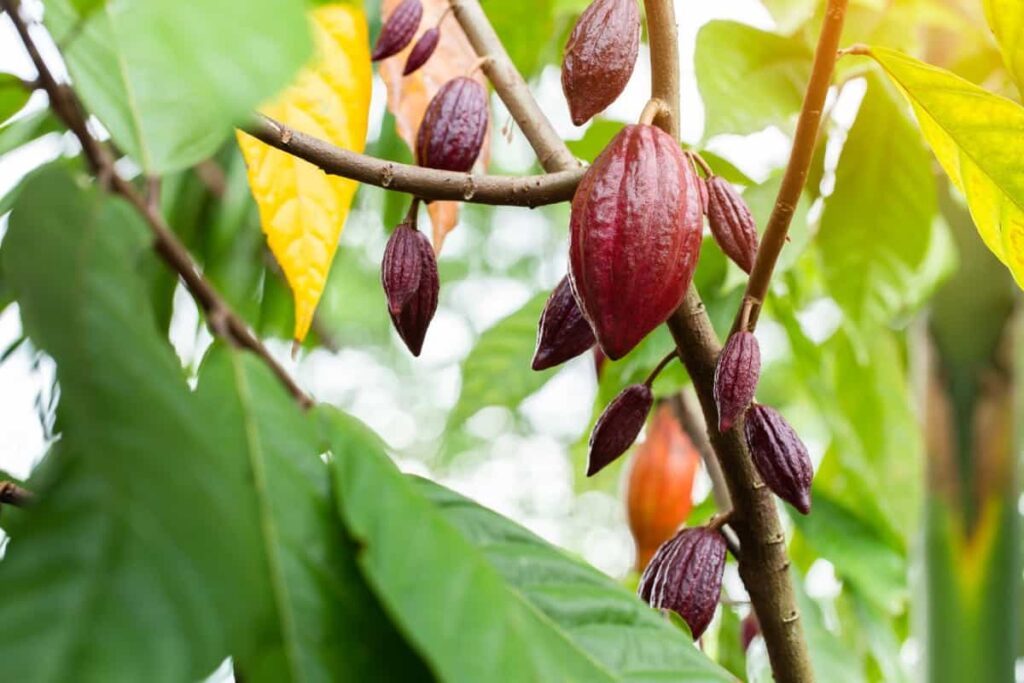
Irrigation: Cocoa requires adequate water availability. In areas with dry spells, irrigation is essential. Drip irrigation has been found effective for cocoa. During summer, weekly irrigation is recommended, and in mixed crops with arecanut, irrigation frequency varies with the season.
Diseases: Black pod disease is a major concern during the monsoon season. Preventive measures include phytosanitation and spraying with 1% Bordeaux mixture. Proper pest management is crucial, especially for mealy bugs and mirids, which can damage cocoa trees and pods.
Harvesting: Cocoa trees typically start producing pods within 2-3 years after planting, but the full production potential is reached around 4-5 years. Harvesting is done manually by cutting the pods from the tree using a knife or machete. Handling the pods carefully is important to avoid damaging the delicate cocoa beans.
Pod Processing: After harvesting, the pods must be processed to extract the cocoa beans. The pods are opened, and the beans, along with the surrounding pulp, are removed. This process is usually done within a day of harvesting to prevent fermentation from occurring inside the pod. Fermentation is an essential step that develops the flavor and aroma of cocoa.
Fermentation: The extracted cocoa beans are placed in shallow containers or fermentation boxes and covered with banana leaves or other suitable materials. Fermentation usually takes 5-7 days and involves microbial activity transforming the beans. The beans must be turned periodically during fermentation to ensure even fermentation and prevent mold growth.
Drying: After fermentation, the cocoa beans are spread out to dry. This can be done on mats, concrete patios, or raised drying beds. The beans are regularly turned and exposed to sunlight to reduce their moisture content. Proper drying is crucial to prevent mold growth and ensure the beans’ quality. The drying process typically takes 5-7 days, depending on weather conditions.
Sorting and Grading: Once the beans are fully dried, they are sorted and graded based on quality. This involves removing any defective or discolored beans and separating them into different size categories. Grading is important for determining cocoa beans’ value and suitability for different chocolate products.
Packaging and Storage: The sorted and graded cocoa beans are then packed in suitable bags or containers for storage or transportation. It’s important to store the beans in a cool, dry, and well-ventilated place to maintain their quality. Proper packaging and storage conditions help preserve the flavor and aroma of the cocoa beans.
In case you missed it: Berry Orchard Management: Essential Month-wise Maintenance Guide
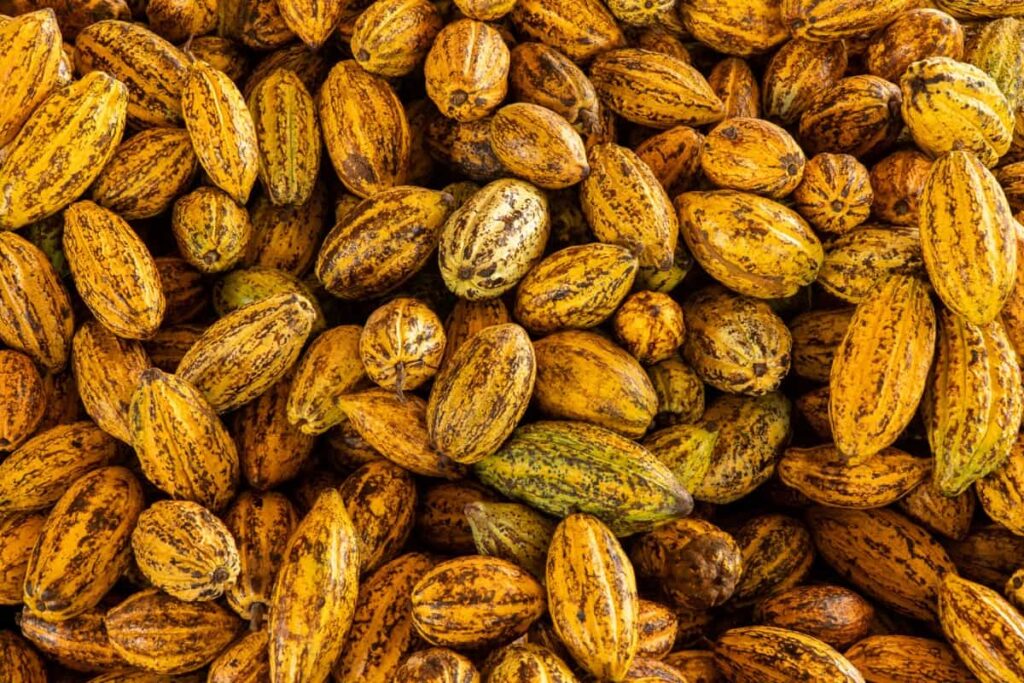
Marketing and Sale: After processing, the cocoa beans can be sold to chocolate manufacturers, cocoa traders, or consumers. Establishing connections with buyers or joining cocoa cooperatives can help farmers access better markets and secure fair prices for their produce.
Farm Management: Regular farm management practices are necessary to maintain a healthy and productive cocoa orchard. This includes weed control, pest and disease management, fertilization, and proper pruning to ensure good canopy structure and light penetration.
January Month Cocoa Orchard Maintenance Planning
- Plan and prepare for the cocoa orchard maintenance, ensuring all necessary tools and resources are available.
- Inspect the orchard for any signs of disease or pests and take appropriate measures for control.
- Prune dead or diseased branches to promote healthy growth.
- Apply organic fertilizers to enhance soil fertility and provide necessary nutrients.
- Monitor weather conditions and irrigation to ensure optimal water management.
February Month Cocoa Orchard Maintenance Planning
- Continue monitoring the orchard for pests and diseases, taking necessary actions for control.
- Implement weed control measures through manual removal or chemical treatment.
- Evaluate the need for shade management and make necessary adjustments.
- Inspect irrigation systems for any repairs or improvements.
- Maintain records of activities and observations for future reference.
March Month Cocoa Orchard Maintenance Planning
- Monitor the growth and development of cocoa trees.
- Conduct soil analysis to assess nutrient levels and apply fertilizers accordingly.
- Implement measures to control common cocoa diseases like a black pod and witches’ broom.
- Monitor shade levels and make necessary adjustments to optimize light conditions.
- Conduct regular assessments of water requirements and adjust irrigation accordingly.
April Month Cocoa Orchard Maintenance Planning
- Assess the progress of cocoa pod formation and monitor for any signs of pests or diseases.
- Implement appropriate measures for the control of cocoa pod borer and other pests.
- Prune overcrowded branches to improve air circulation and reduce disease incidence.
- Monitor and maintain adequate moisture levels in the soil.
- Continue weed control activities to minimize competition for resources.
May Month Cocoa Orchard Maintenance Planning
- Monitor the maturation of cocoa pods and prepare for the upcoming harvest.
- Maintain regular inspections for pests, focusing on cocoa mirids and capsids.
- Apply appropriate treatments to control pests, following recommended dosage and safety guidelines.
- Monitor weather conditions and adjust irrigation as necessary.
- Conduct regular assessments of shade levels and make adjustments if needed.
In case you missed it: Optimizing Grapes Orchard Management: A Month-by-Month Maintenance Guide for High Yield and Profit
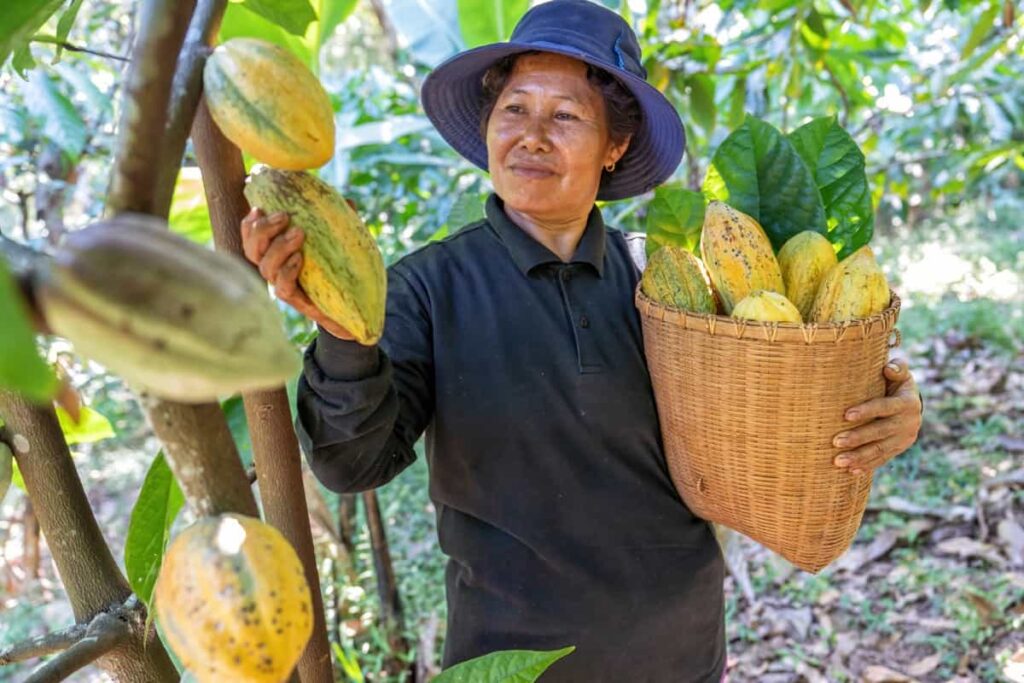
June Month Cocoa Orchard Maintenance Planning
- Begin harvesting cocoa pods based on their maturity.
- Implement proper harvesting techniques to minimize damage to the pods.
- Sort and collect harvested pods for further processing.
- Continue monitoring and controlling pests and diseases.
- Maintained records of harvest quantities and observations for evaluation.
July Month Cocoa Orchard Maintenance Planning
- Complete the cocoa pod harvest and evaluate the overall yield.
- Conduct post-harvest activities, such as fermenting and drying the cocoa beans.
- Clean and maintain harvesting equipment for future use.
- Assess the condition of the cocoa trees and address any health issues.
- Plan for the next cycle of maintenance activities.
August Month Cocoa Orchard Maintenance Planning
- Evaluate the success of the previous harvest and identify areas for improvement.
- Conduct pruning to remove dead wood and promote new growth.
- Monitor for signs of pests and diseases and take necessary control measures.
- Analyze soil fertility and apply appropriate fertilizers.
- Prepare for the upcoming rainy season and adjust irrigation as needed.
September Month Cocoa Orchard Maintenance Planning
- Monitor the growth of new shoots and branches.
- Conduct maintenance pruning to shape the cocoa trees and remove unwanted growth.
- Implement pest control measures to prevent infestations.
- Monitor and manage shade levels to optimize light conditions.
- Apply fertilizers based on soil analysis and crop requirements.
October Month Cocoa Orchard Maintenance Planning
- Monitor the development of cocoa pods and assess their maturity.
- Implement measures to control fungal diseases like brown rot.
- Monitor soil moisture and adjust irrigation accordingly.
- Control weeds through manual removal or chemical treatment.
- Prepare for the upcoming harvest and ensure all necessary equipment is available.
In case you missed it: Optimizing Banana Orchard Management: A Month-by-Month Maintenance Guide for Maximum Yield
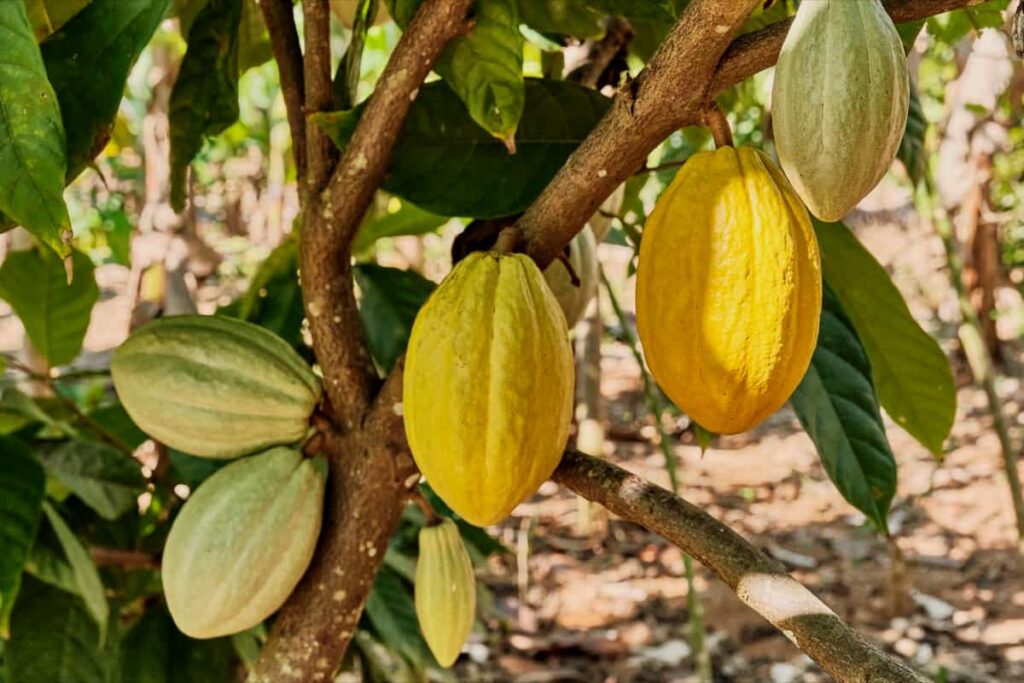
November and December Month Cocoa Orchard Maintenance Planning
- Prepare the nursery for the propagation of cocoa seedlings.
- Select high-quality seeds and germinate them in appropriate growing media.
- Monitor seedling growth and provide necessary care, such as watering and shading.
- Implement pest and disease control measures in the nursery.
- Plan to transplant seedlings to the main orchard in the following year.
Conclusion
This comprehensive month-wise guide outlines the key tasks and strategies for successful cocoa orchard maintenance. From nursery setup to post-harvest activities, we covered pruning, pest control, fertilization, irrigation, and more. By following these guide, you can optimize your cocoa harvest and ensure the health and productivity of your orchard.
- Budget Friendly Sheep Shed Ideas: Cheap and Low-Cost Tips
- How Much Do Cattle Farmers Make: Revenue Streams in Cattle Farming
- Management Pests and Diseases in Your Cotton Field
- Sheep Farming Business Plan for Beginners
- Aquaponic Farming at Home: A Step-By-Step Guide
- Profitable Village Farming Business Ideas in 2024
- High-Yield Aquaculture: Fast-Growing Fish for Farming
- Effective Fish Pond Construction Techniques for Beginners
- Irrigation and Water Management in Pineapple Farming
- Blossom to Harvest: Mastering Flowering and Pollination in Papaya Farming
- Pig Fattening Essentials: From Selection to Sale for Beginners
- Raising Wagyu Cattle: A Complete Guide for Premium Beef Production
- Soil Types and Their Water Holding Capacity
- Optimizing Irrigation Schedules for Coconut Groves for Enhanced Yield
- Espresso Your Garden: Coffee Grounds for Healthier Acid-Loving Plants
- The Best Soil Mix for Snake Plants: How to Mix Your Own Snake Plant Soil
- Green Thumb Success: Expert Tips for Cultivating Greenhouse Beans All Year Round
- Bloom All Year Round: The Ultimate Guide to Indoor Hyacinth Care
- Eco-Friendly Gardening: How to Make Liquid Fertilizer from Kitchen Waste
- Ultimate Guide to Grow Anise in Pots: Explore Seed Propagation to Harvesting
- Guide to Raising Chester White Pigs: Discover Breed Facts to Growth Management
- Mastering the Elegance: The Ultimate Guide to Weeping Cherry Tree Care, Planting, and Maintenance
- Ultimate Guide to Planting Garlic in Grow Bags: Growing Strategies for Beginners
- How to Fix Spider Plant Leaf-Related Problems: Natural and Organic Remedies
- 10 Reasons Why Your Tulsi Plant is Shedding Leaves: Home Remedies and Solutions
- Optimizing Growth and Yield: The Advantages of Palm Bunch Ash Fertilizer
- Utilizing Neem Oil Extract as a Natural Pesticide for Hydrangea
- From Soil to Harvest: Various Ways in Which Farmers Can Use AI Tools
- Steps to Encourage and Induce Citrus Flowers: A Comprehensive Guide
- How to Fix Snake Plant Leaf-Related Issues: Natural and Organic Remedies
- Transform Your Garden into a Fragrant Oasis with Raat Ki Rani (Night Blooming Jasmine)
- Discover the Ideal Chicken Breeds for Philippine Farms
- How to Create a Poultry Egg Farm Business Plan for Profits
- Grow Lemon Cucumbers Like a Pro: Insider Techniques for Bountiful Yields
- Ultimate Guide to Caring for Your Pink Princess Philodendron: Tips for Thriving Variegation
- Areca Nut Profit Per Acre: Calculating Yield and Cost of Cultivation
